Every once in a while, I like to make a few batches of some hard cider. My stash of it was eradicated during the wake last year, so its time again to get some going. This should be pretty good for drinking by the time shearing comes around this spring.
This is a pretty easy process and recipe. The biggest thing is to make sure all your equipment and workspace is sanitary. I use Star San to wash everything, and I keep a bowl of it with a wash rag in by my workspace in case I need to swab something off in the middle of the process. The hardest part of the sanitizing process for me is the not rinsing it all off but allowing it to air dry. Just seems so wrong not to rinse LOL!
First thing I do is get my Campden tablets ready. They need to be crushed and soaked in water overnight.
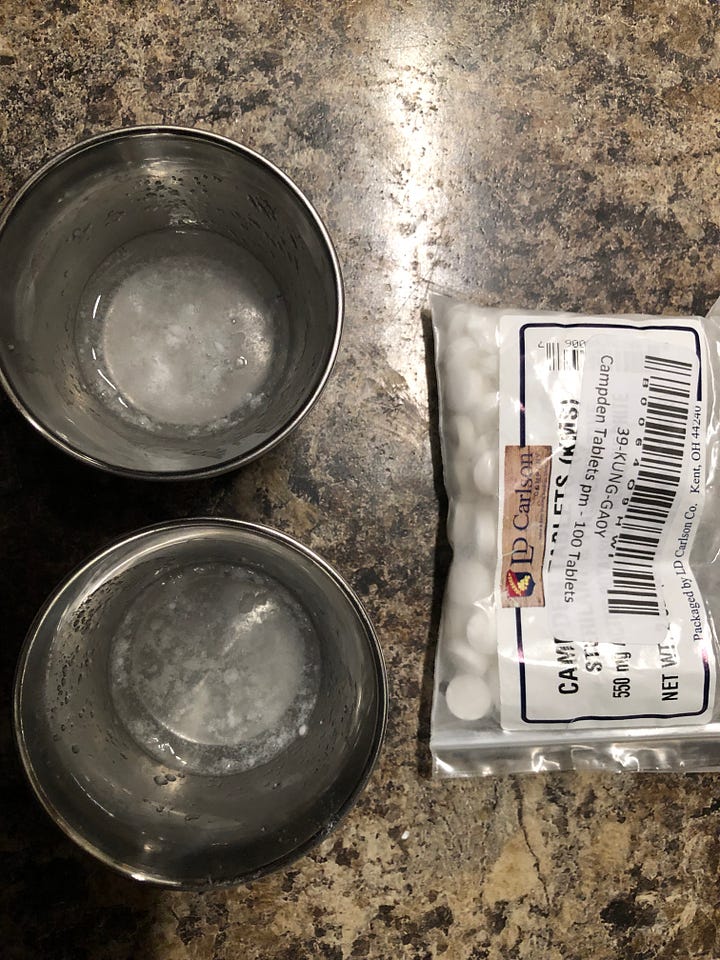
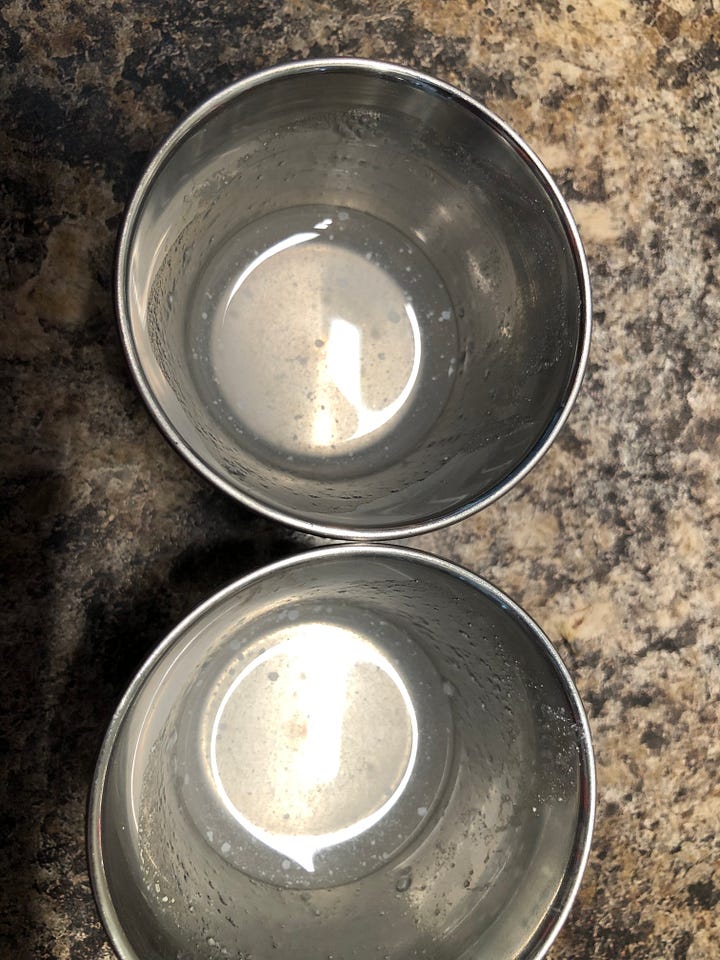
Campden tablets are what will kill any harmful bacteria in the cider or juice you decide to use, plus create an inhospitable environment for any wild yeast that may be present. They won’t hurt your wine yeast.
*******SAFETY NOTE!!!!! Campden tablets can cause an anaphylactic reaction if you are allergic to sulfa drugs. Warn anybody drinking your cider and ask if they are allergic to sulfa drugs. It’s not cool to try and kill your friends! ******
Since my yeast has been sitting in my fridge for a while, long past the “use in 6 months” warning, I felt it prudent to see if I could get it to activate before I went any further. No point wasting good apple juice if the yeast won’t do its job, right?
I put 1/4C warm water with a teaspoon of sugar in it. When the sugar was dissolved, I added about 1/4 teaspoon of yeast on the top and let it start to dissolve. I mixed it in and in about 10 mins I had a great bloom on it. I am satisfied that my yeast is still active!
I am using EC-1118 Wine yeast for this recipe.
Now that my equipment is sanitized, my yeast gets happy, and my Campden tables are dissolved, it’s onto the fun part of this science experiment!
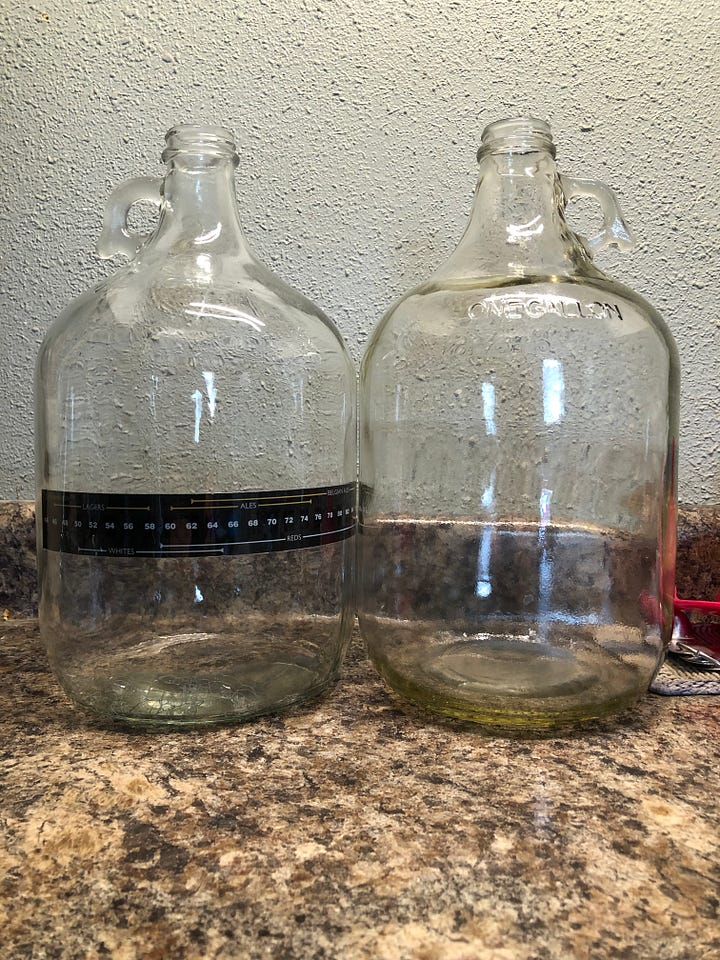
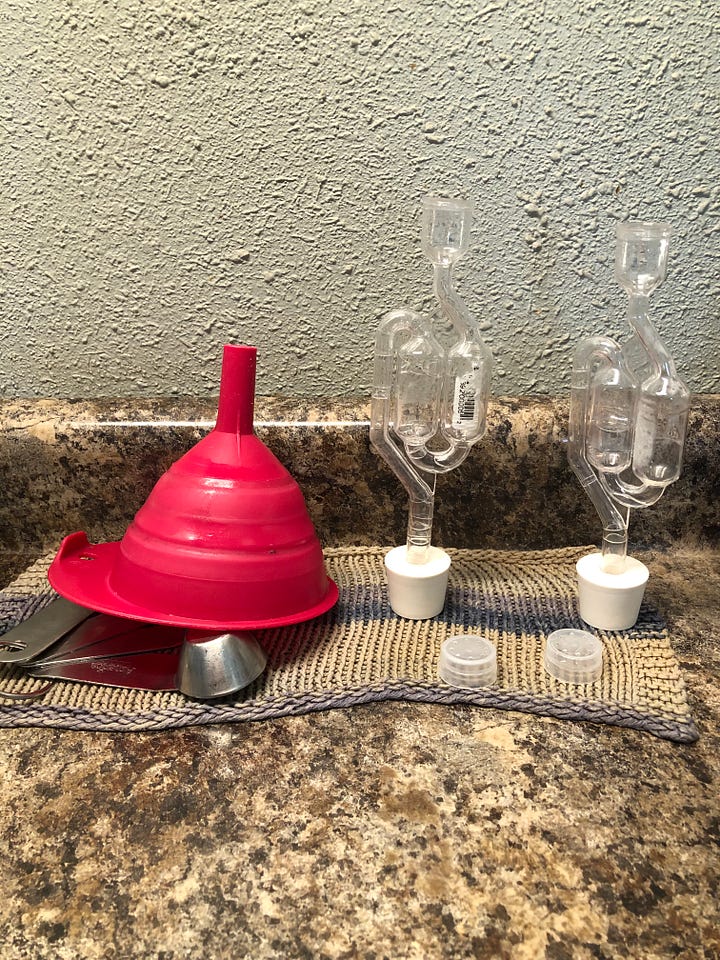
The juice I’m using I found at my local grocery store. Its 100% Honey Crisp juice that has not been made from concentrate. I’m sure it’s been pasteurized, as raw juice is sometimes tough to find, and when you do it’s really expensive. I looked extensively for real apple cider this past fall, but for some reason, none of the stores here were carrying any. Kinda bummed me out!
Honey Crisp is a sweet juice and that should make a sweeter hard cider than apple cider would be. Cider can be a bit tart, and that seems to me to be amplified when I made hard cider before. I’m good with a sweeter hard cider.
I did not have any pectin enzymes on hand, so the finished cider may be cloudy. It doesn’t bother me much, as it all drinks the same! Pectin enzymes makes the cider clear.
The juice is added to the carboy jar, and I hold a bit back to flush the funnel after everything has been put in. Juice first, then the Campden tablet/water mix, then you pitch the yeast.
I did double the yeast that the recipe listed for two reasons. That is my yeast (above) ready to be pitched.
The last time I made this I had to pitch yeast 3 times during the fermentation. I would rather pitch just the once if I can.
The yeast is not as fresh as it once was as listed above, and I wanted it to have a bit more poop to it.
After pitching the yeast, I let it dissolve for several mins before swirling it into the juice more. The One-Who-Shall-Not-Be-Called-Boy-Child wanted to learn the process and that is he who is pitching the yeast.
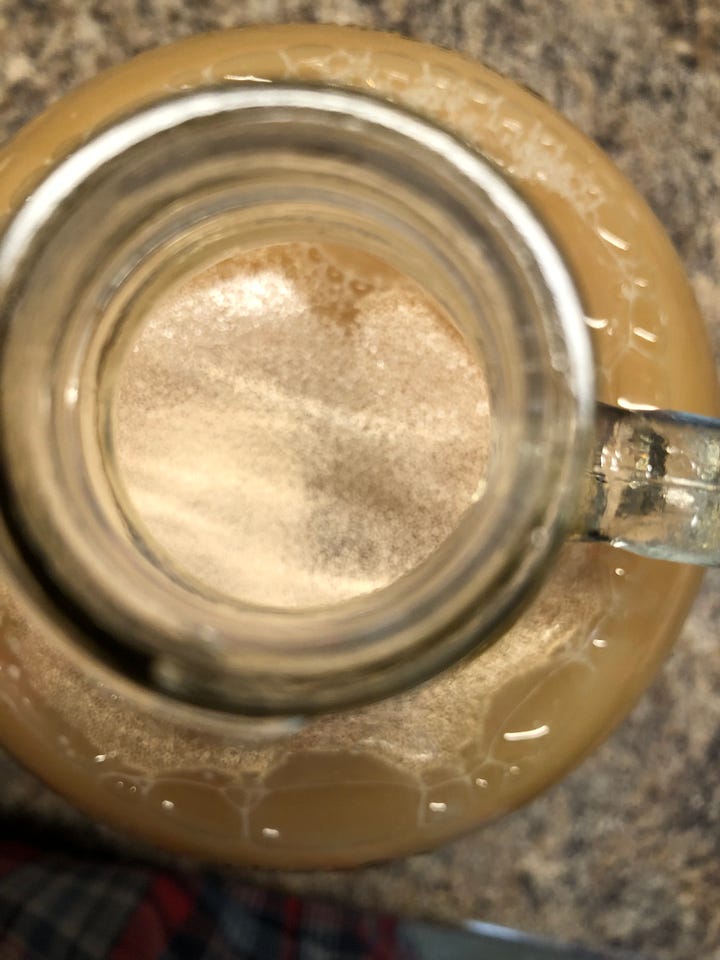
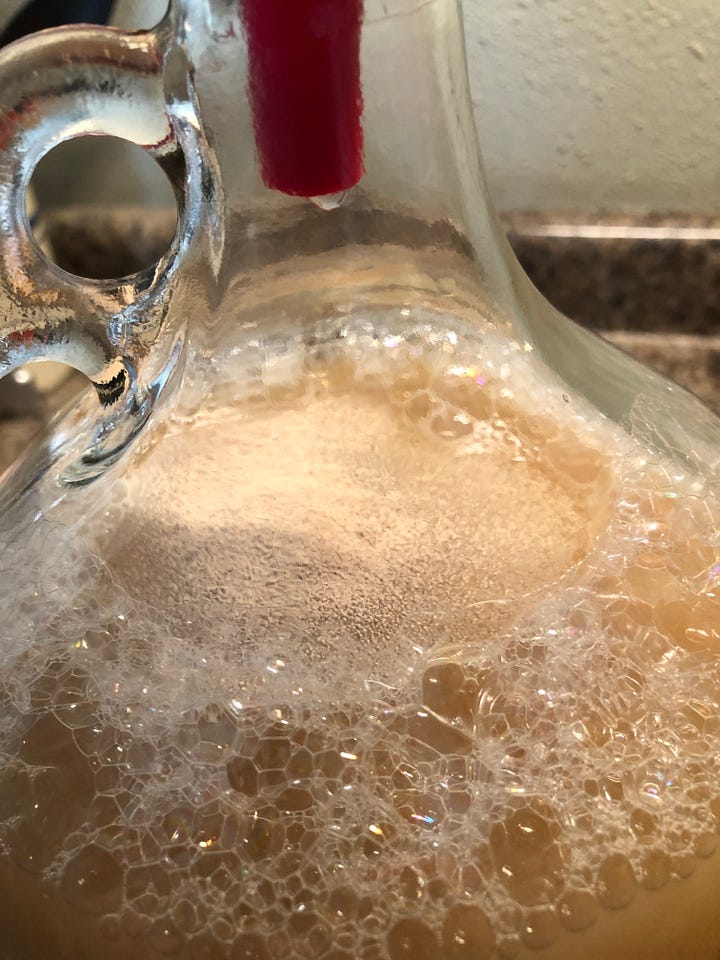
The remaining juice flushes the funnel, and the stoppers and air locks go on. The air lock uses vodka as the liquid medium. The vodka acts as a sanitizer in the event of any wild yeast or bacteria floating in the air, in essence, it kills and blocks anything bad before it has a chance to get into the carboy. The fermentation air in the carboy passes thru the vodka on its way out. It’s pretty fun to watch those things go when the yeast really gets to work. Blurp blurp blurp
The black band you see on the carboy is called a fermometer.
Fermometer=fermentation thermometer
It tells me the temperature of the juice inside the carboy and helps me make sure it stays between 60-70 degrees. The recipe calls for a range between 55-75.
Its difficult to see but the number 68 is lit up a bit green. Perfect temp for this!
I wrap the jars with small towels, so that sunlight doesn’t have a chance to alter the process, plus it keeps the jars from having a major temp change if my house gets cold or too hot.
These will sit now for about 30 days to ferment. Once that process ends, we will add the corn sugar and rack it into bottles for capping
Stay tuned!!!
*********************************************************
Here is the recipe I’m using today.
1 Campden tablet crushed in 1T water
1 gallon apple juice or apple cider
1oz pectin enzyme
1/2t champagne yeast
1oz corn sugar
1/2C water
Use above guideline to make your own!
— Resources—-
The book I have, which is very simple to understand is “The Joy of Brewing Cider, Mead, and Herbal Wine” by Nancy Kozial I found it at Tractor Supply. Or you can find it here on Amazon Amazon The Joy of Brewing
I really enjoy the website Northern Brewer They have everything you need to start your journey in home brewing. Plus, they have a forum and other learning resources on their site. Well worth the time to read and watch if you are interested in starting this.
Blessed Be!




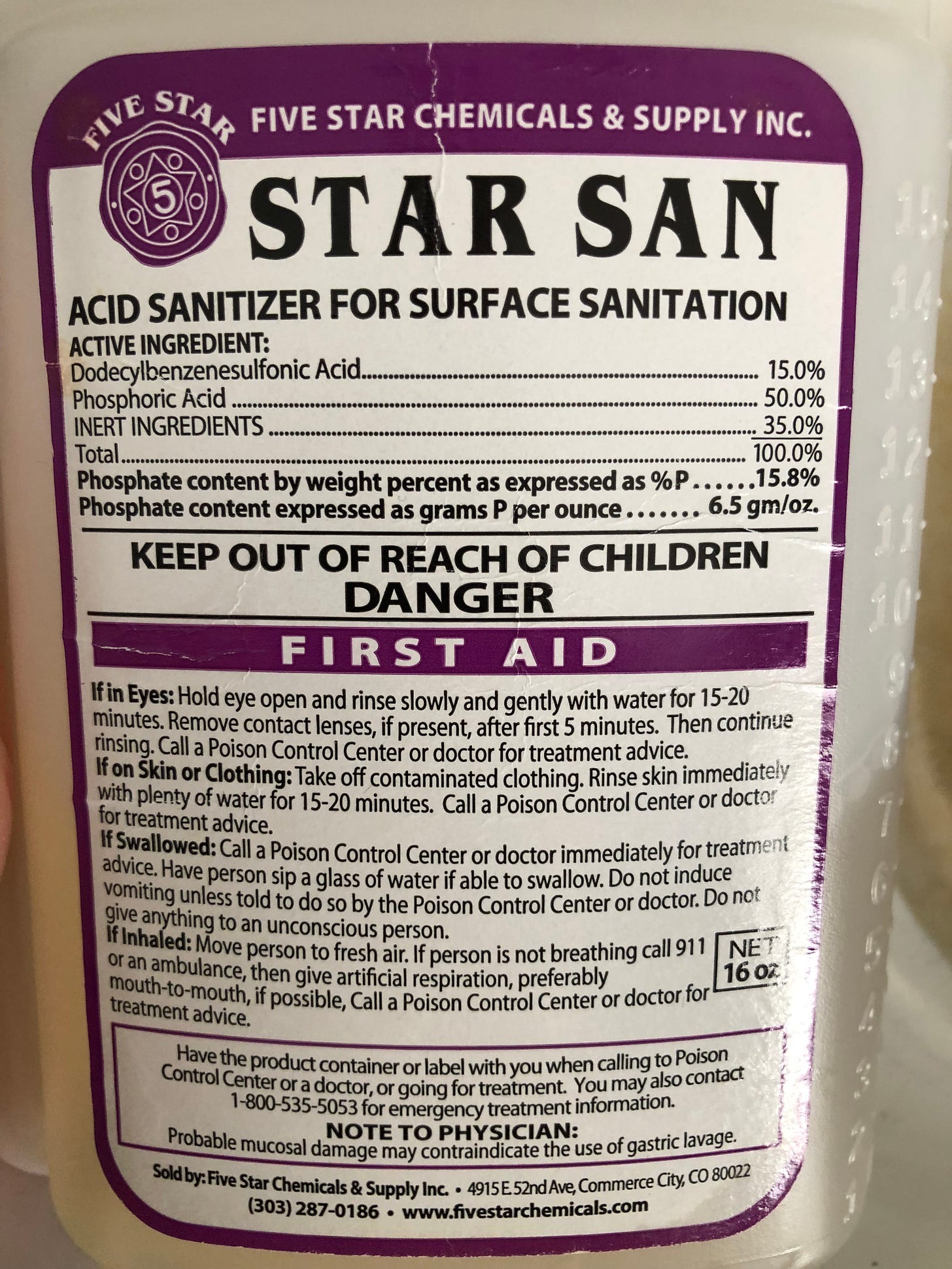
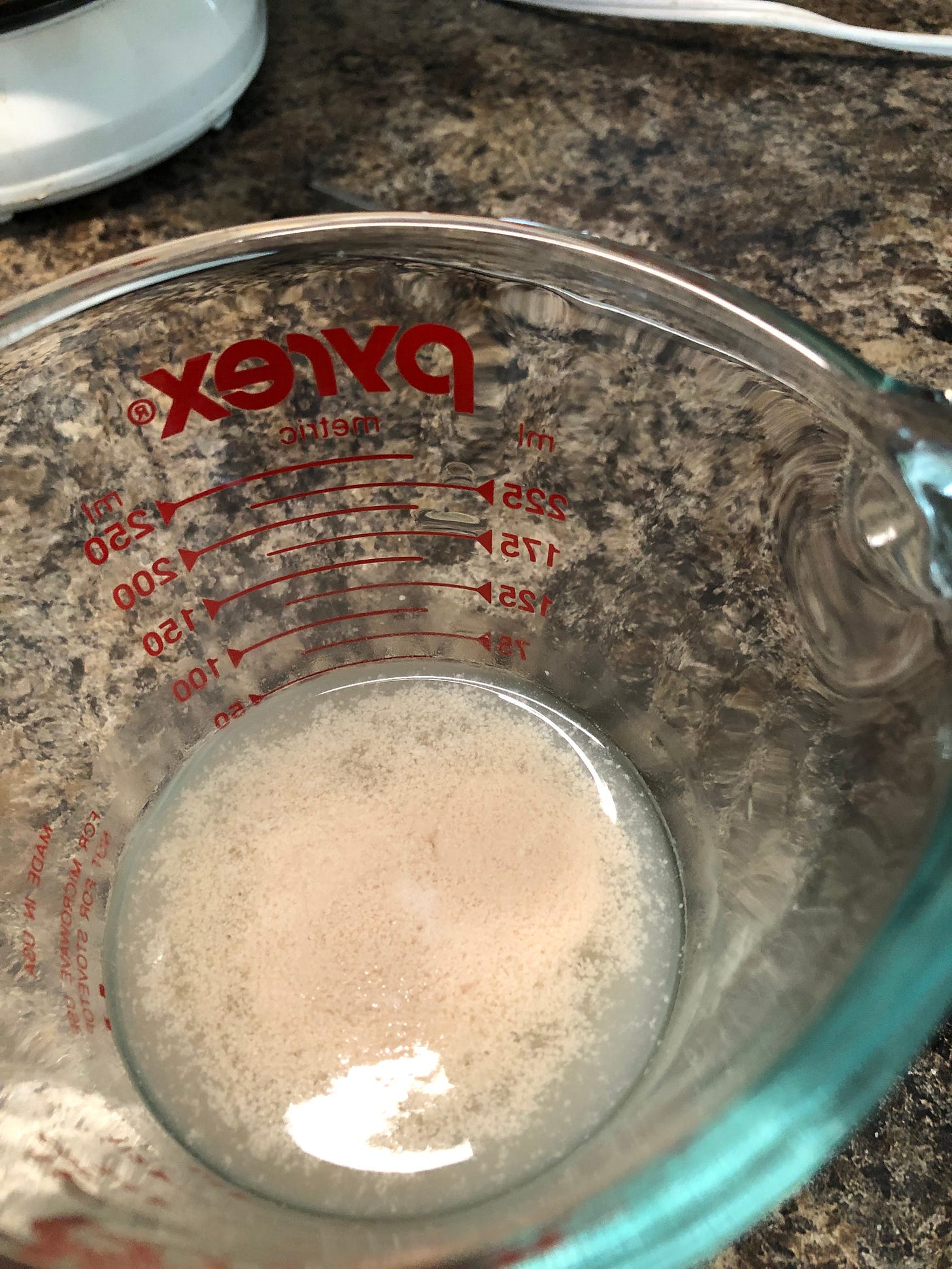


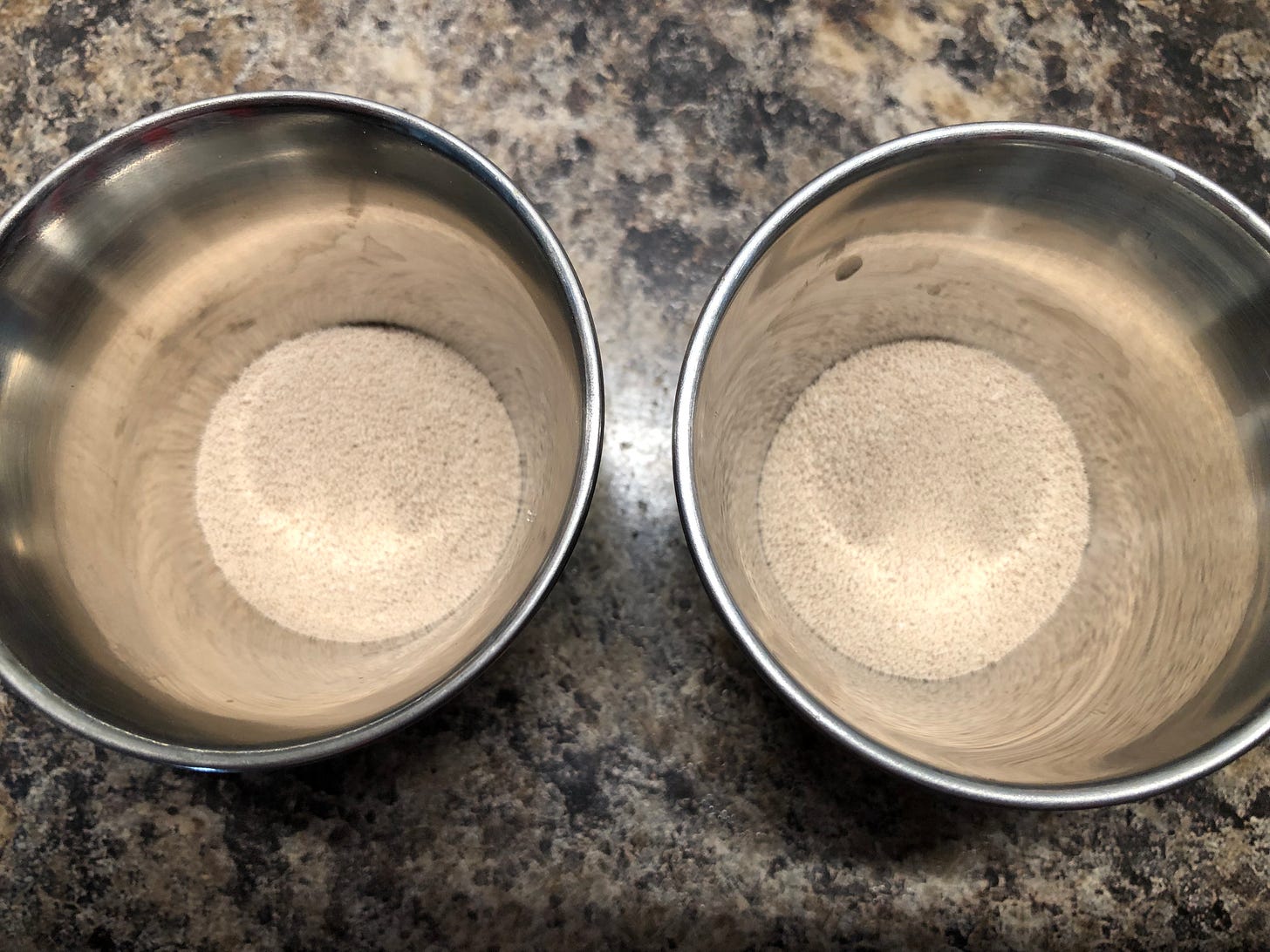

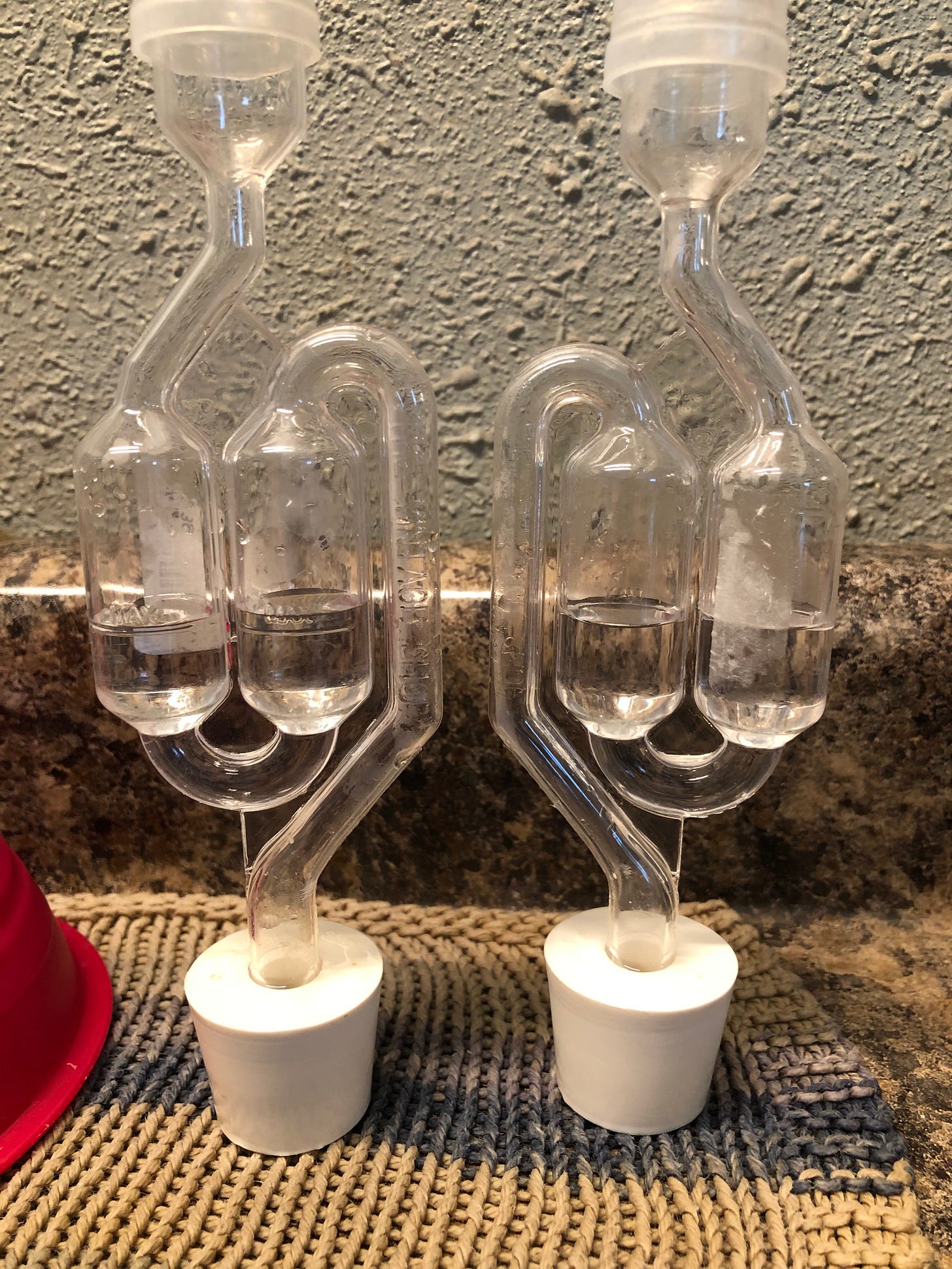
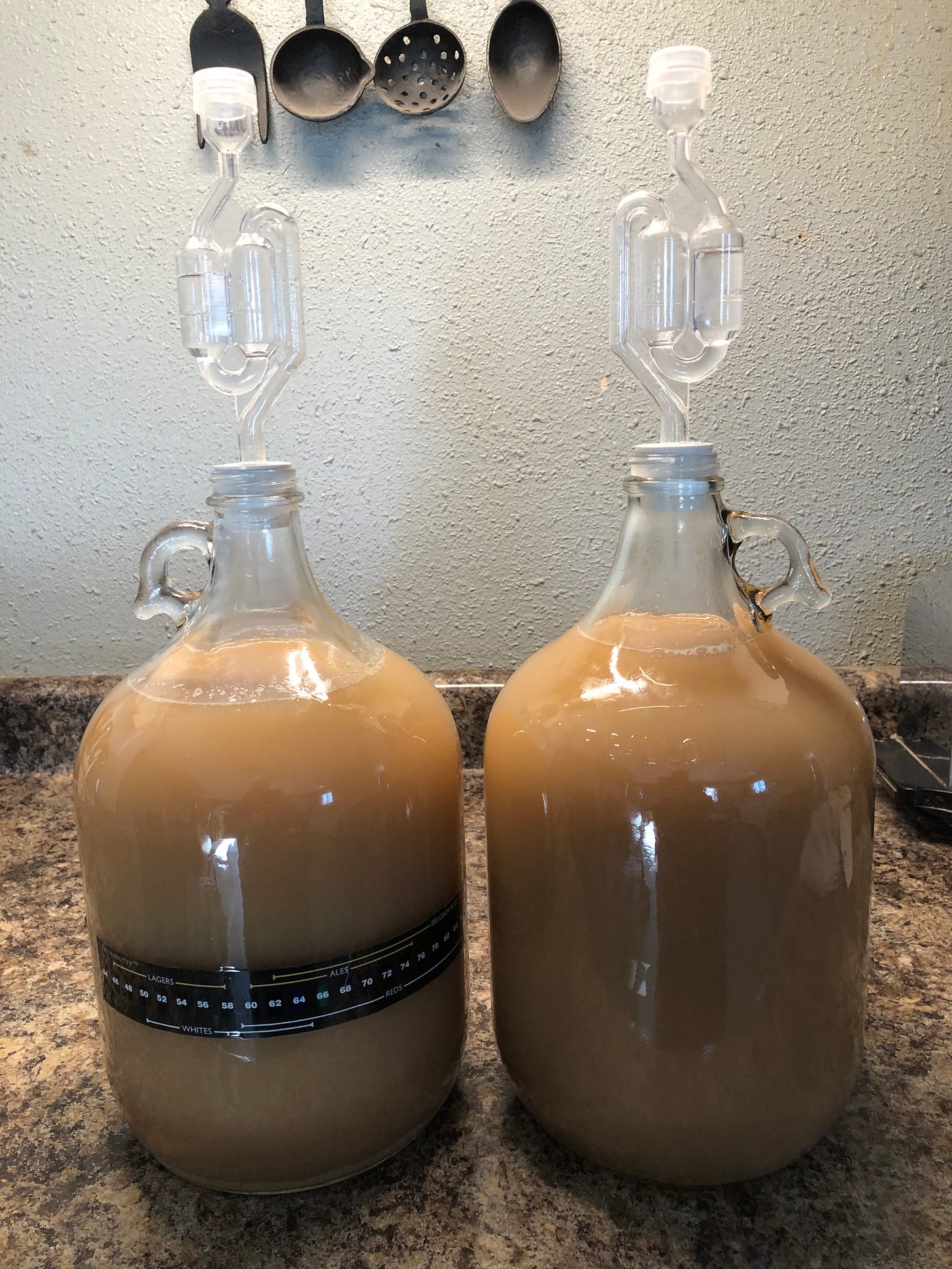

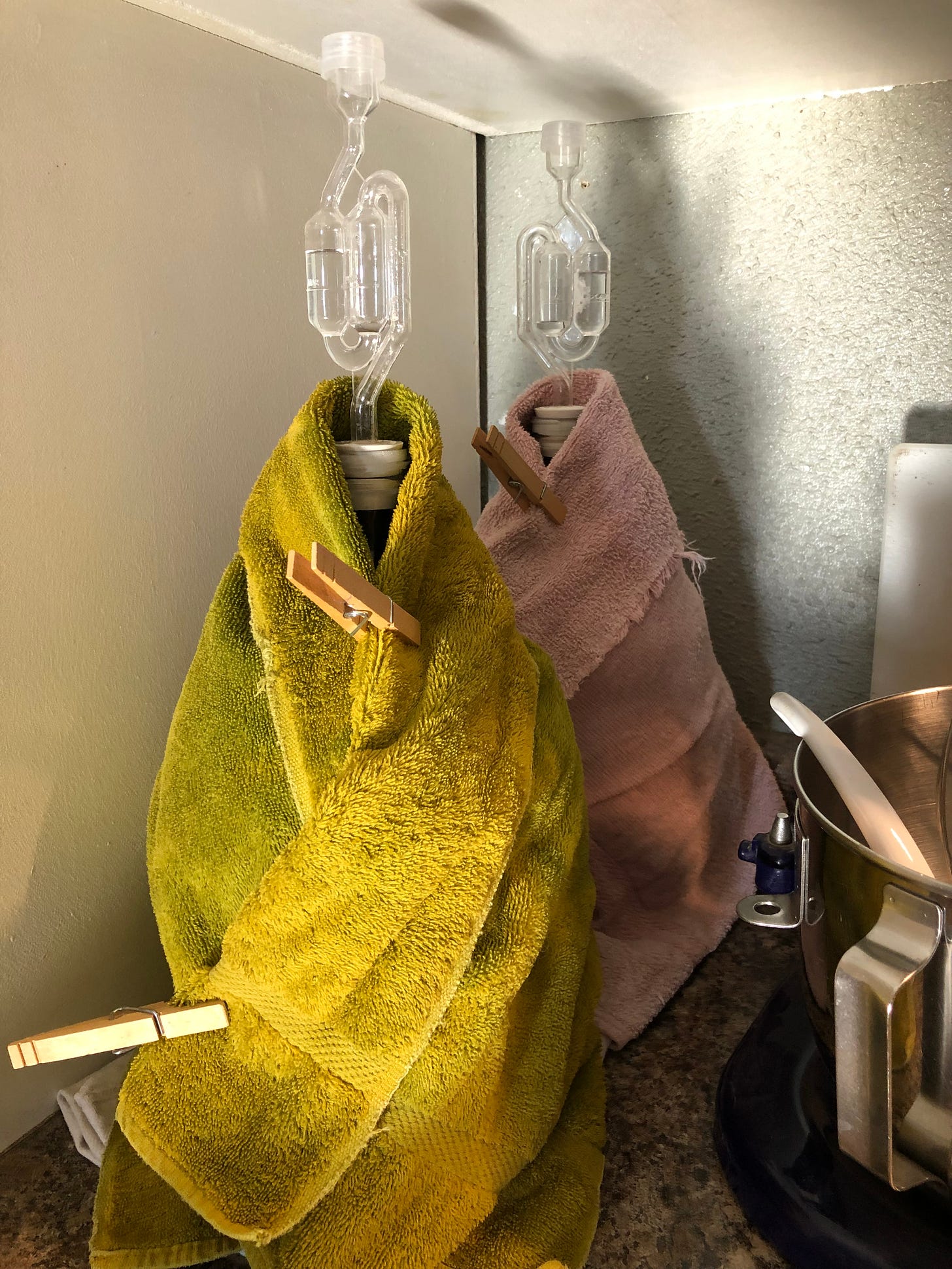
They have cute little towel robes omg!!!
This was an AWESOME post. Sharing
Your blog teaches So many cool things, Thank You! You will of course publish a book incorporating all this wonderful information?